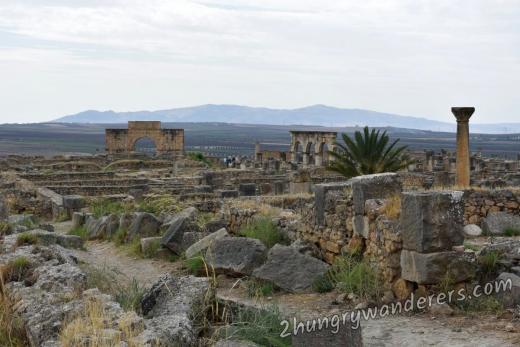
On our way from Fes to Chefchaouen we had two important stops - Meknes and Volubilis. After Meknes failed to impress, we were glad we left early in the morning and had a lot of time to explore the ancient roman city. Several hours or even half a day can easily be spent there, if you are impatient to know why - watch our video.
The city has a long and dynamic history, here I'm not going to go into details, but highlight some of the main points. There are signs of even earlier civilizations, but solid evidence confirms Volubilis was a Carthaginian village from the 3rd century BC until 146 BC when Rome took it over. Several turbulent centuries followed, when locals and the roman invaders fought for control of the city, until 44 AD. With Rome focusing efforts on negotiation peace and prosperity followed - olive oil and grains were exported to the capital and money flowed back to the one of the most remote cities in the empire. Most of the impressive buildings still standing today were built during this golden age - mansions, shops, temples similar to those in the rest of the huge empire. Near the end of the third century Rome had so many wars to fight that when Volubilis was lost they never came back to reclaim it. The numerous other ethnic groups that inhabited the city remained for a lot longer, at first under Christian control, then in the seventh century Arabs moved to this area and the Islamic period of the city began. None of those, however, could match the prosperity under Rome's rule - the city slowly began to fade, until it was completely deserted in the 14th century.

Despite the wrath of the elements, several earthquakes and some Morrocan rulers using the cut stones for buildings in Meknes, what is still left is amazing in both quantity and quality. Most of the excavation work was done by the French in the first half of the 20th century, and after the wars works continued by united French-Moroccan efforts. Other countries joined the restoration efforts and formal recognition of the importance of the site was given by UNESCO listing Volubilis as a part of the World Heritage in 1997. Nowadays only minor restoration is being done, there are no current plans for further excavation, which is both sad and confusing considering only half of what is officially documented to be Volubilis is restored. What other secrets are hiding beneath the nearby hills is something probably the next generations will discover.
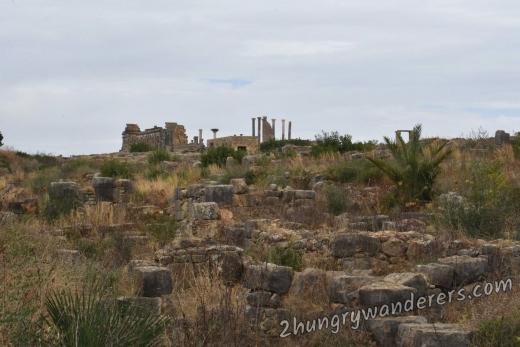
Getting close one can easily see why the area attracted so many different civilizations throughout the centuries - rich, fertile agricultural land that is still covered in wheat crops, olive and almond tree plantations. Some of the main buildings can be seen even before entering the enormous complex, so excitement levels rise early. Right after the entrance there is a small museum with both indoor and outdoor exhibits. Inside, well presented displays tell the story of the place and also give insight into culture, religion, economy and other aspects of the daily life, outside are some of the best preserved inscriptions from various ages. It is a good idea to explore the museum first and then the city, but due to darkening clouds we left it for last and went straight to the ruins before the coming rain.
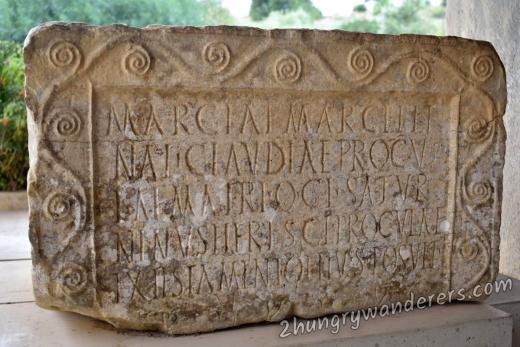
I will talk about the most notable buildings very soon, but want to start with the smaller, middle-class neighborhoods we explored right after going in. The houses are so well preserved, that with just a little imagination one can go back in time and walk the lively alleys, go trough the open doors and almost see the people going about their daily lives. Fire pits, windows and door hinges complete the picture with vivid details.

A fully reconstructed olive press shows how the main export of the region - olive oil - was produced. There were numerous buildings like this one, probably close to a hundred, with 58 discovered so far, each equipped with a mill for crushing the olives and sets of presses and filtration systems to extract the precious liquid.
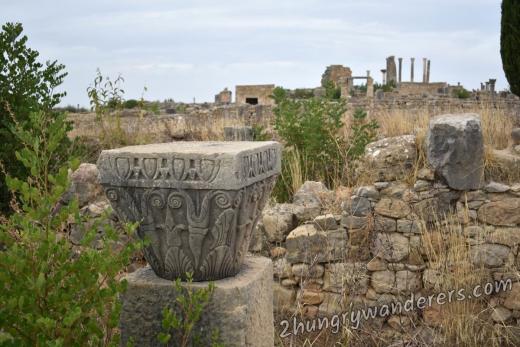
Widening streets lead towards the center of the city, bigger houses with more details begin to emerge. Amazing feature of Volubilis are the restored in their original place mosaics in many of the houses. These pictures made of tiny stones have even given the names of many of the buildings - House of Orpheus holds a mosaic depicting the god playing a harp to some forest creatures, House of the Athlete has a funny mosaic of a probably drunk acrobat riding a donkey back to front, holding a cup in his hand, and so on.

Three buildings in the center rise above all, a basilica, the Capitoline Temple and the Triumphal arch - well preserved and restored now they provide the best photo opportunities, but in Roman times things were a bit different. The tall columns lined basilica was the main administrative building, where magistrates decided the fate of the city.

Next to it, the major temple of the city dedicated to the trio of Jupiter, Juno and Minerva. Must have been a great sight back in the days, with people climbing the high steps to pay their respects to the gods, pray for health, bountiful crops or success in upcoming battles. There were other smaller temples in the city, but the Romans had another reason to build a huge and magnificent temple in addition to providing a proper place of worship - with literally dozens of other religious, ethnic and cultural groups living in the city, including Berbers, Nomads, Africans, Syrians, Spaniards, Greeks, and Jews, who had to be reminded who is in charge.


When discovered, The Arch of Caracalla had enough pieces of the inscriptions scattered nearby to reveal it's own history. The arch was built to honor emperor Caracalla and his mother, a sad twist in the story is they were both killed before the project was completed. This beautiful marble structure was even more impressive than what we see today - richly decorated with statues of nymphs and bronze chariots on top of it.

The Triumphal arch marks the end of Decumanus Maximus - the main street of the city starting at the main city gate - The Tingis Gate. Both ends give great views of the ruins. This wide and almost straight road is lined with the most prestigious villas and shops, be sure to save enough energy to wander a bit in each of them, as some stunning details can be discovered there.



A slight disappointment from a photographers perspective in Volubilis is the aqueduct - it is underground. From a technological point of view the city was very advanced for its time, the aqueduct connects a nearby spring to the city, a well developed network provided fresh water to houses, baths and fountains. The aqueduct itself was under the Decumanus Secundus (parallel to Decumanus Maximus), and terminated at a large fountain in the city center, which is still visible today. Two thousand years ago Volubilis had so much that some towns do not have even now - in addition to providing clean water to practically every citizen, there was a second network of pipes for sewage, draining all used water from the city to a nearby river.

We have explored numerous other Roman remains in Europe, but Volubilis definitely impressed us with both grand constructions and small, intricate details.
Gallery
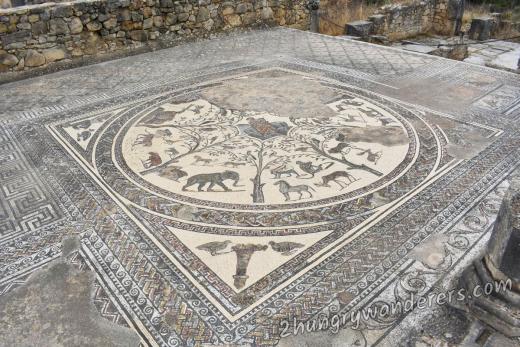
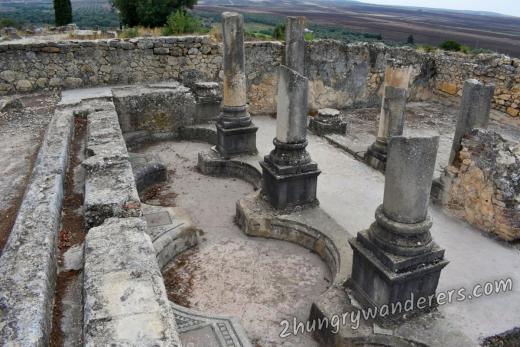
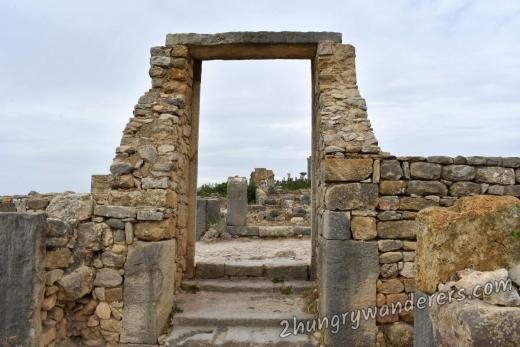

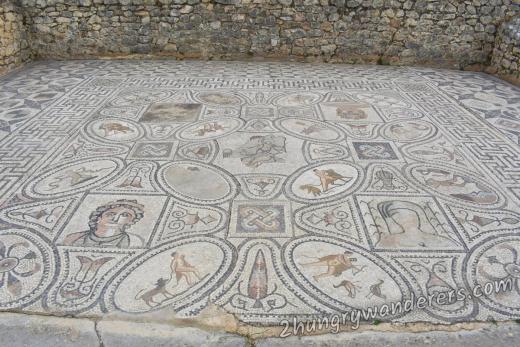
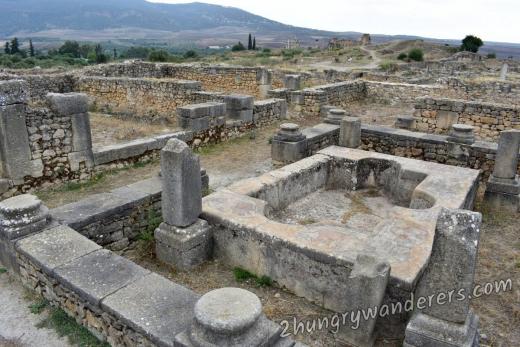
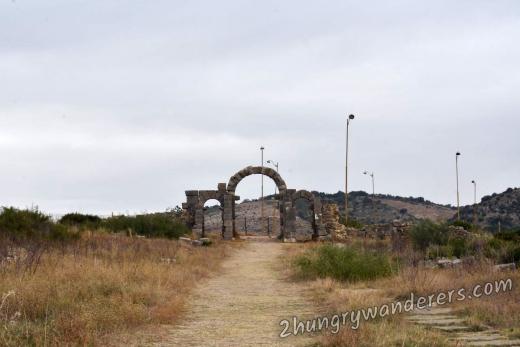
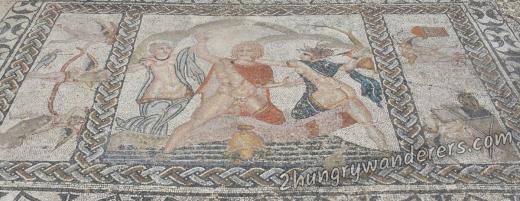
Comments